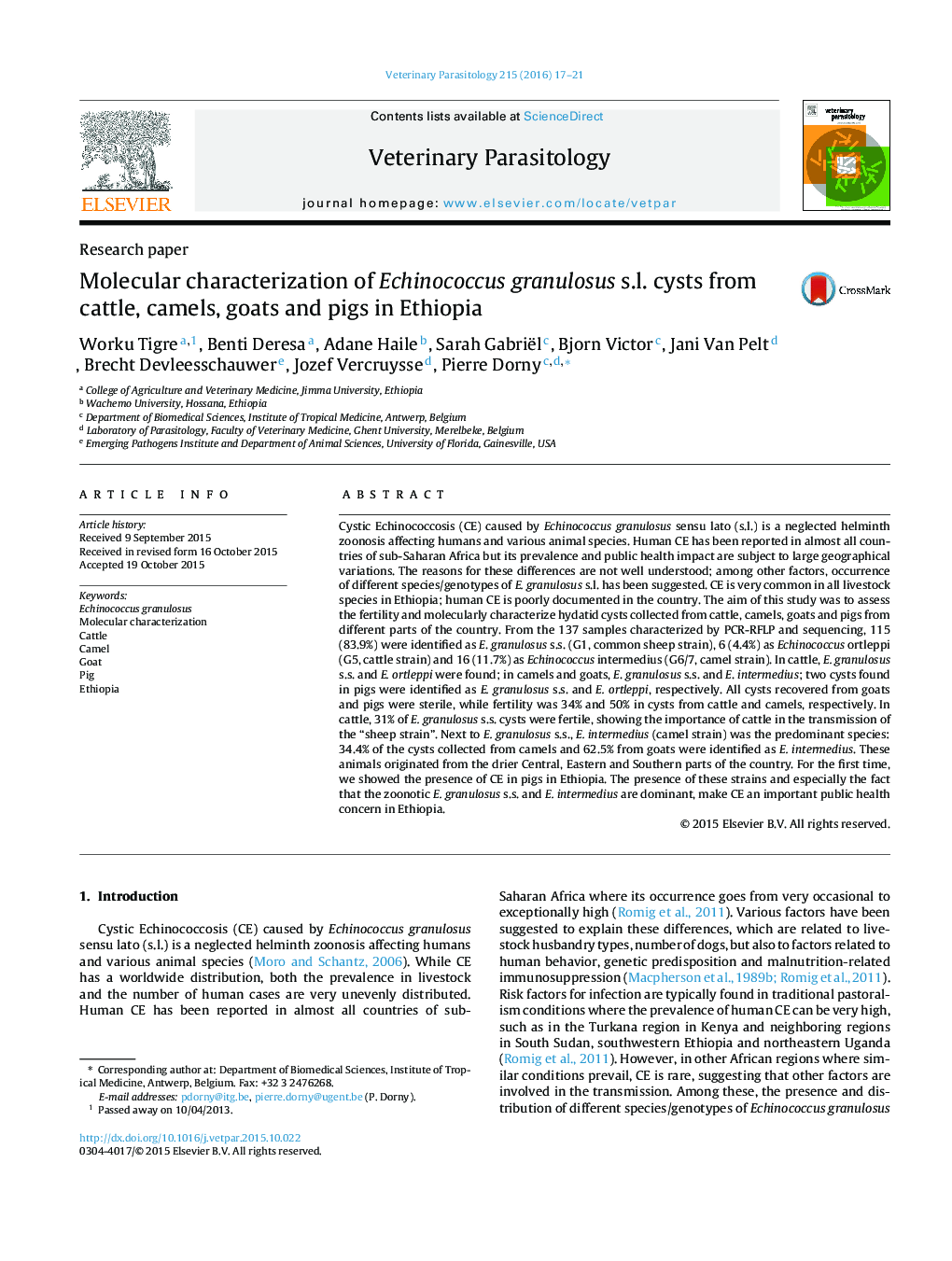| کد مقاله | کد نشریه | سال انتشار | مقاله انگلیسی | نسخه تمام متن |
|---|---|---|---|---|
| 2469849 | 1555661 | 2016 | 5 صفحه PDF | دانلود رایگان |

• Hydatid cysts were collected from cattle, goats, camels and pigs in Ethiopia.
• Echinococcus granulosus s.s., E. ortleppi and E. intermedius were identified.
• 31% of cysts in cattle were fertile.
• First record of hydatid cysts in pigs in Ethiopia.
Cystic Echinococcosis (CE) caused by Echinococcus granulosus sensu lato (s.l.) is a neglected helminth zoonosis affecting humans and various animal species. Human CE has been reported in almost all countries of sub-Saharan Africa but its prevalence and public health impact are subject to large geographical variations. The reasons for these differences are not well understood; among other factors, occurrence of different species/genotypes of E. granulosus s.l. has been suggested. CE is very common in all livestock species in Ethiopia; human CE is poorly documented in the country. The aim of this study was to assess the fertility and molecularly characterize hydatid cysts collected from cattle, camels, goats and pigs from different parts of the country. From the 137 samples characterized by PCR-RFLP and sequencing, 115 (83.9%) were identified as E. granulosus s.s. (G1, common sheep strain), 6 (4.4%) as Echinococcus ortleppi (G5, cattle strain) and 16 (11.7%) as Echinococcus intermedius (G6/7, camel strain). In cattle, E. granulosus s.s. and E. ortleppi were found; in camels and goats, E. granulosus s.s. and E. intermedius; two cysts found in pigs were identified as E. granulosus s.s. and E. ortleppi, respectively. All cysts recovered from goats and pigs were sterile, while fertility was 34% and 50% in cysts from cattle and camels, respectively. In cattle, 31% of E. granulosus s.s. cysts were fertile, showing the importance of cattle in the transmission of the “sheep strain”. Next to E. granulosus s.s., E. intermedius (camel strain) was the predominant species: 34.4% of the cysts collected from camels and 62.5% from goats were identified as E. intermedius. These animals originated from the drier Central, Eastern and Southern parts of the country. For the first time, we showed the presence of CE in pigs in Ethiopia. The presence of these strains and especially the fact that the zoonotic E. granulosus s.s. and E. intermedius are dominant, make CE an important public health concern in Ethiopia.
Journal: Veterinary Parasitology - Volume 215, 15 January 2016, Pages 17–21